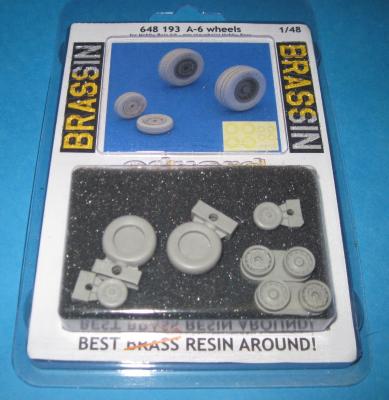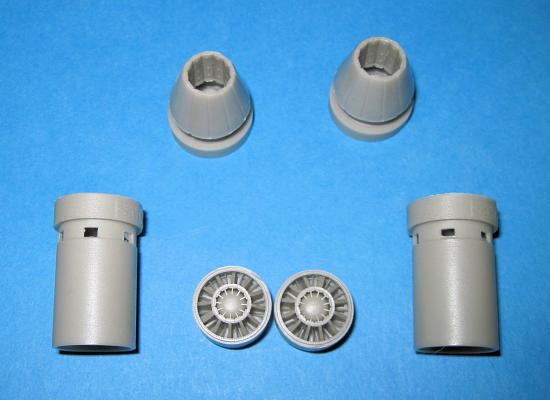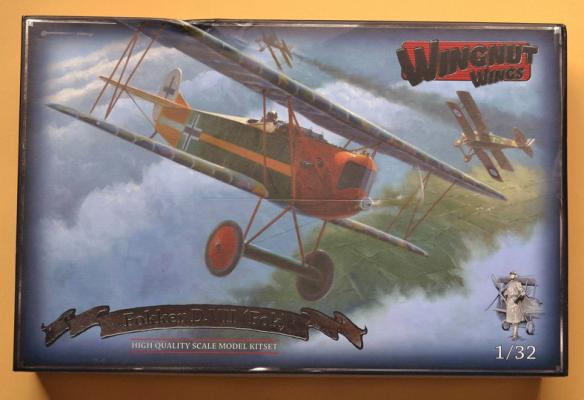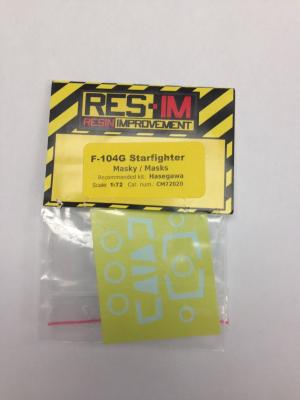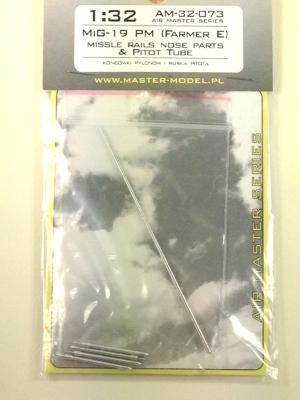Eduard continues its release of improved resin wheels with a set designed for the Hobby Boss A-6 Intruder. The set consists of eight beautifully case resin pieces, a wheel mask set and a set of great instructions. The wheel hubs are cast separately for the main gear with the front wheels being cast as one piece each. The masks included are normal kabuki tape masks and will help the front wheels.
Welcome to the IPMS/USA Reviews site!
Introduction: The primary organization of the IPMS/USA Review website is by IPMS/USA National Contest Class. Within each Class there are sub-menus by kits, decals, books, etc. The Miscellaneous Class is for items that are not class specific or that cross two or more classes.
IPMS/USA Members: We encourage you to submit reviews, both here and to the Journal. To volunteer for membership in the IPMS/USA "Reviewers Corps" and submit your own reviews, please read the Guidelines For Submitting Product Reviews.
Manufacturers, publishers, and other industry members: IPMS/USA is pleased to offer your company the opportunity for product reviews. All product reviews are performed by IPMS/USA members, and are posted in the publicly-accessible section of our website. With very few exceptions, we perform full build reviews of new kit releases, aftermarket products, and supplies. If you would care to provide product samples for review, please contact John Noack, IPMS/USA 1st VP.
To learn more about IPMS/USA, please see our About Us page.
Aires has issued several styles of exhausts for the current 1/48th scale kits on the market. These kits have either open or closed nozzles and for either the Hasegawa or Revell kit. So there are four sets in total. This set is for the Hasegawa series of F/A-18E/F kits and has closed nozzles. The set consists of six parts- two flame holders, two exhaust tubes and two closed nozzles. Casting is perfect. There are no flaws or blemishes.
The set is simplicity to use by removing the casting blocks from each of the six pieces, three per side. You can see in the comparison shots that the detail is much higher in the resin parts. The interior of the afterburner petals is much better and has the correct shape.
The Subject
The Fokker D.VII is one of the most recognized fighters of the Great War and has been chronicled so many times that it is unnecessary to spend a great deal of time describing it to this audience. Suffice it to say the legendary fighter was (and still is) widely considered to be the best German fighter aircraft of WWI. Almost 3,300 Fokker D.VIIs were built by three manufacturers (Fokker, Albatros & OAW) in the last year of the conflict and they were often the reason a number of German pilots achieved ‘Ace’ status. Before building any model of this iconic aircraft, I would encourage modelers to seek out and read some of the history of the Fokker D.VII to more fully appreciate the experience.
This is a masking set for the Hasegawa F-104G. The masks are cut from yellow tape, similar to Eduard masks and the set includes masks for all three sections of the Hasegawa F-104G as well as masks for each of the tires. There are three separate masks for the three windscreen panels and there are two masks for both of the other two sections of the canopy. As with Eduard’s masks, the masks for the larger portions of the canopy establish the borders or the canopy leaving an open section in the middle that will need to be filled with either liquid mask, scotch tape or some other materials to protect the center of the canopy section.
The set also includes masks for the wheel allowing the tires to be painted black, the masks applied and the for the wheel hubs to be painted. As with the mask for the larger portions of the canopy, the areas outside of mask will need to be covered with some other material to keep paint off of the rest of the wheel.
The MiG-19PM was designed as missile carrying aircraft, so the powerful cannons that had been carried by earlier versions of the MiG-19 were deleted. The MiG-19PM’s weapons were the early air-to-air missiles developed by the Soviet Union and were carried on four underwing pylons.











